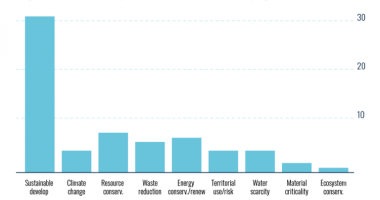
There’s a right way and a wrong way to do webinars. These tips help ensure you get it right.
Free Book Preview: Brand Renegades
Discover how two entrepreneurs used unconventional business strategies to turn their startup into a multimillion-dollar company.
July 22, 2021 4 min read
Opinions expressed by Entrepreneur contributors are their own.
As people conduct more and more business and shopping online, webinars are becoming commonplace, as they allow you to reach workers and buyers no matter where they are in the world. But although they’re relatively easy to put together and run, you’ll need to avoid some of the most common webinar mistakes to get good results.
Related: Why Webinars, Now 25 Years Old, Are More Effective for Sales Than Ever
1. Not accounting for burnout
Even the nicest people can be a little egocentric. What often happens in webinars is the speaker focuses just on themself and their own event. They forget that everybody’s doing webinars and that workers can be attending several throughout the day. They don’t pay attention to the fact that the attendees have already been sitting in their chairs in front of a screen all day or that they might not even have details about what the webinar is about.
Therefore, you have to make everything more interesting in order to make your webinar stand out, whether it’s the email invite, the speaker you bring in or other elements.
As an example, in my company, we’re bringing in an author and former Navy SEAL. The plan is for him to give his insights about overcoming transition periods of hardship, such as what we’ve all experienced amid the pandemic. People signing up for the webinar have been responding positively just because it’s something different. Instead of yet another product pitch that everybody’s throwing out, having a SEAL is something novel that we can use to start relationships and ensure that the webinar is effective and performs as the lead-generation platform we need it to be.
As you’re trying to think of fun ways to make the webinar more engaging, make sure you think through the flow of things. If you plan a wine tasting and the wine doesn’t get delivered to the people attending the webinar, for example, that’s a real bummer and your attendees will likely be disappointed. You want to make sure your plan is reliable or that you’ve got a great pivot to turn to. Don’t forget to follow up, too. If you work with an author, for instance, maybe arrange for everybody to get a copy of their book after your event.
2. Letting cameras go dark
People struggle not to multitask, largely because they’re under so much pressure to do, do, do all the time. When you host a webinar, try to predict how people are going to multitask. They’re going to cheat and turn their camera off so that they can be doing other things as you speak. That’s disappointing and challenging as a speaker, because then it’s impossible to get visual feedback from their faces to see if you’re keeping them engaged. Consider using a raffle for people who keep their camera on the whole time or find other prizes and games that are going to appeal to the audience you have.
3. Not being creative and offering something helpful
Even if the people in your audience are 100% excited about your topic, they all have struggles. They’re all looking for little hacks or products that can take the edge off their stress or get them off the screen sooner. So, recognize that and give them something unique that they’ll really enjoy and use. This could be anything from cookware to putting lessons with a professional golfer. Lead with this incentive in the webinar and make sure the audience can tie it back to whatever you’re talking about or trying to sell them on. Find an option that can further your conversation, because ideally, the webinar is the start of a long-term relationship, not a one-off interaction.
Related: 8 Ways To Attract a Large Webinar Audience
Even as people start to come back to the office, we’ll likely keep interacting through technology more than we ever have in the past – which includes using webinars to teach and sell. Avoiding these common blunders can make your event more effective, so stay mindful of everything else people have to do online, prioritize active cameras and give them a hand every time you host.
This article is from Entrepreneur.com








